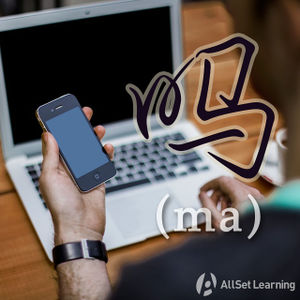Difference between revisions of "Tag questions with "ma""
m (Text replace - "Asking Questions" to "Asking questions") |
|||
| Line 15: | Line 15: | ||
</div> | </div> | ||
| − | By placing these on the end of a sentence, you can soften a suggestion or request confirmation. | + | By placing these on the end of a sentence, you can soften a suggestion or request confirmation. |
| + | |||
| + | == Examples == | ||
<div class="liju"> | <div class="liju"> | ||
| + | * 我们 喝茶,<em>好吗?</em> | ||
* 咱们去咖啡店,<em>好吗?</em> | * 咱们去咖啡店,<em>好吗?</em> | ||
* 他是你哥哥,<em>对吗?</em> | * 他是你哥哥,<em>对吗?</em> | ||
| Line 27: | Line 30: | ||
==See also== | ==See also== | ||
| + | |||
*[[Yes - no questions with ma]] | *[[Yes - no questions with ma]] | ||
*[[Tag questions with bu]] | *[[Tag questions with bu]] | ||
Revision as of 06:15, 14 August 2012
-
Level
-
Similar to
-
Used for
-
Keywords
As well as yes / no questions, you can also form tag questions with 吗. Tag questions are quick questions that are tagged on the end of a sentence to ask for confirmation. In English, this is often done with "right?", or by adding the negative form of the verb phrase - e.g., "isn't it?".
The easiest way to do this in Chinese is to add an adjective and 吗 on the end of the sentence.
Basic Pattern
- 好吗?
- 对吗?
- 是吗?
- 可以吗?
By placing these on the end of a sentence, you can soften a suggestion or request confirmation.
Examples
- 我们 喝茶,好吗?
- 咱们去咖啡店,好吗?
- 他是你哥哥,对吗?
- 你喜欢他,是吗?
- 给我们十二瓶葡萄酒,可以吗?
See also
Sources and further reading
Books
- Chinese: An Essential Grammar, Second Edition (pp. 144-145) →buy
- New Practical Chinese Reader 1 (新实用汉语课本1) (pp. 218) →buy



